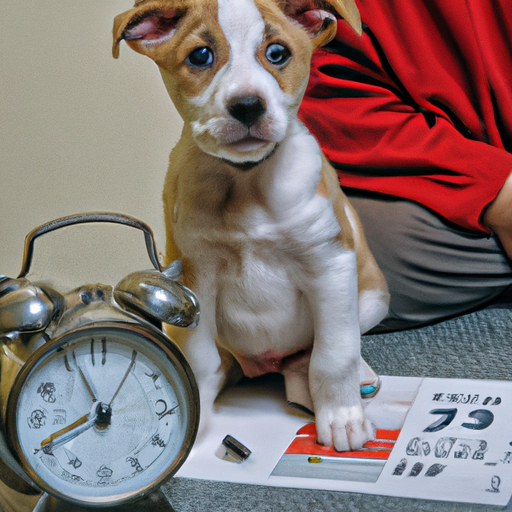As a caring pet parent, your puppy’s health and comfort undoubtedly top your list of priorities. One aspect of puppy care that might be a bit tricky to navigate is the application of flea and tick medicine.
When to Begin Treatment
Typically, you can start using flea and tick prevention products on puppies from 7-8 weeks of age. However, this can vary based on the type of medication and the specific brand. It’s always recommended to consult with your vet before starting any treatments.
- Spot-ons: These are usually safe to use on puppies aged 7-8 weeks and older.
- Oral medications: Most are safe for puppies aged 4 weeks and older, weighing at least 2 pounds.
- Collars: Depending on the brand, these can be used on puppies aged 6-10 weeks and older.
Choosing the Right Product
The market is flooded with various flea and tick prevention products, so it’s crucial to find the one that’s right for your puppy.
- Consider your puppy’s age and weight: As mentioned above, the age and weight of your puppy can limit the type of product you can use safely.
- Think about your puppy’s lifestyle: If your puppy spends a lot of time outdoors, a product that repels ticks might be beneficial.
- Consult your vet: Your vet can provide you with advice based on your puppy’s unique health needs and circumstances.
How to Apply Flea and Tick Medication
The application process can vary depending on the type of product you’re using. Here’s a general guide:
- Spot-ons: Part your puppy’s fur to expose the skin and apply the product directly to the skin in one or more spots where your puppy can’t lick it off.
- Oral medications: These are typically given once a month and can be mixed into your puppy’s food.
- Collars: Ensure the collar is fitted correctly – you should be able to fit two fingers between the collar and your puppy’s neck.
Common Side Effects to Watch Out For
Like any medication, flea and tick prevention products can cause side effects. While most are mild, it’s important to monitor your puppy after application.
- Irritation: This includes redness, scratching, or other signs of discomfort at the application site.
- Gastrointestinal upset: Symptoms might include vomiting or diarrhea.
- Lethargy: If your puppy seems unusually tired after application, it might be a side effect of the medication.
| Symptoms | Action |
|---|---|
| Mild symptoms persisting for more than 24 hours | Consult your vet |
| Severe symptoms such as seizures, difficulty breathing, etc. | Seek emergency veterinary care |
Frequently Asked Questions
Q: Can I use flea and tick medicine on a newborn puppy?
A: No, newborn puppies should not be treated with these products. If you suspect a flea or tick infestation, consult with your vet for safe treatment options.
Q: How often should I apply flea and tick medicine?
A: Most products are designed to be used monthly, but always follow the instructions on the product packaging and consult your vet if you’re unsure.
Q: What if my puppy has a reaction to the flea and tick medicine?
A: If you notice any adverse reactions, stop using the product and consult your vet immediately.
In conclusion, managing fleas and ticks is a crucial part of puppy care. By choosing the right product and applying it correctly, you can keep your furry friend safe from these pesky parasites. Always remember to consult with your vet before starting any new treatments. Your puppy is counting on you!



